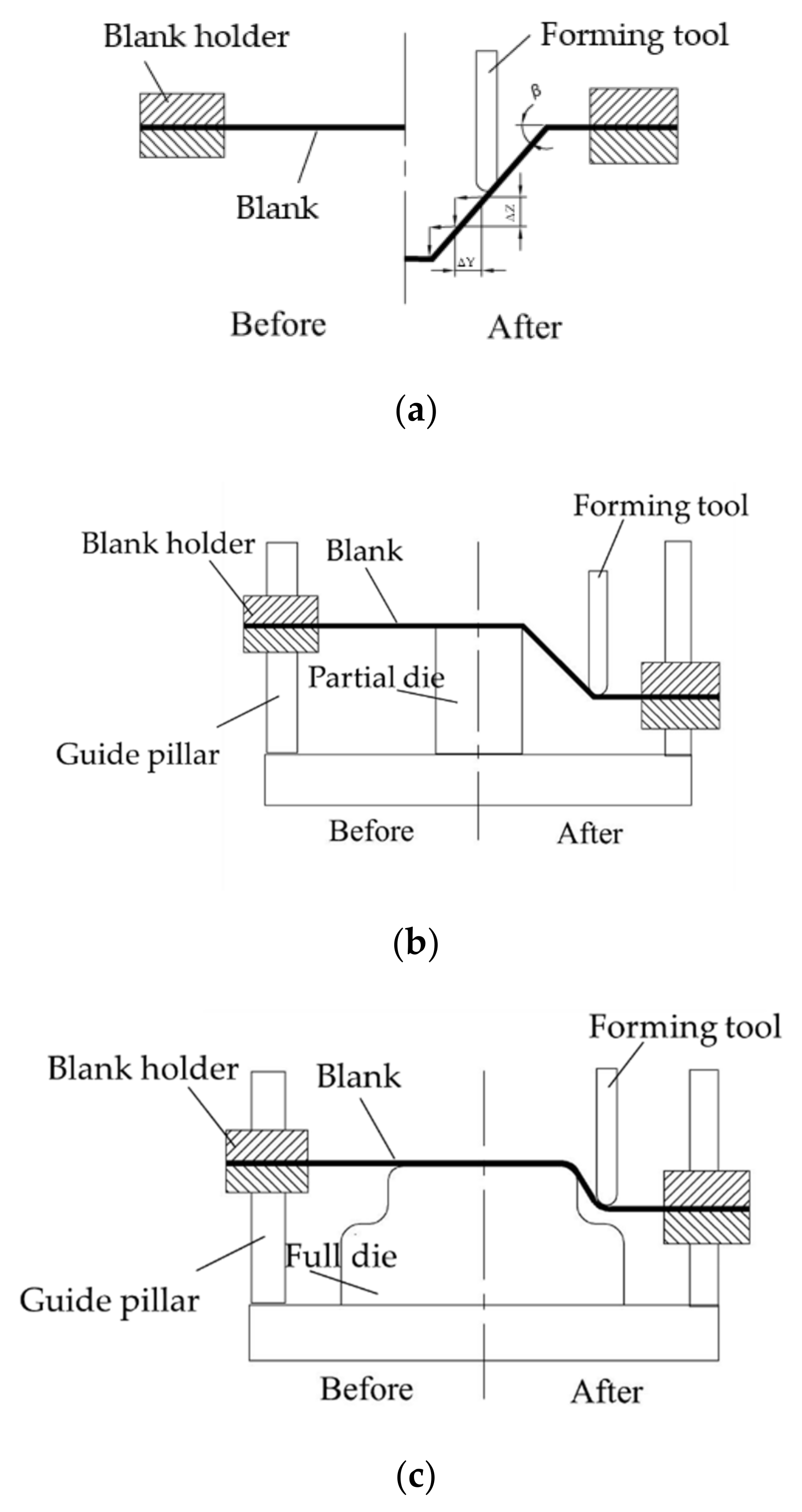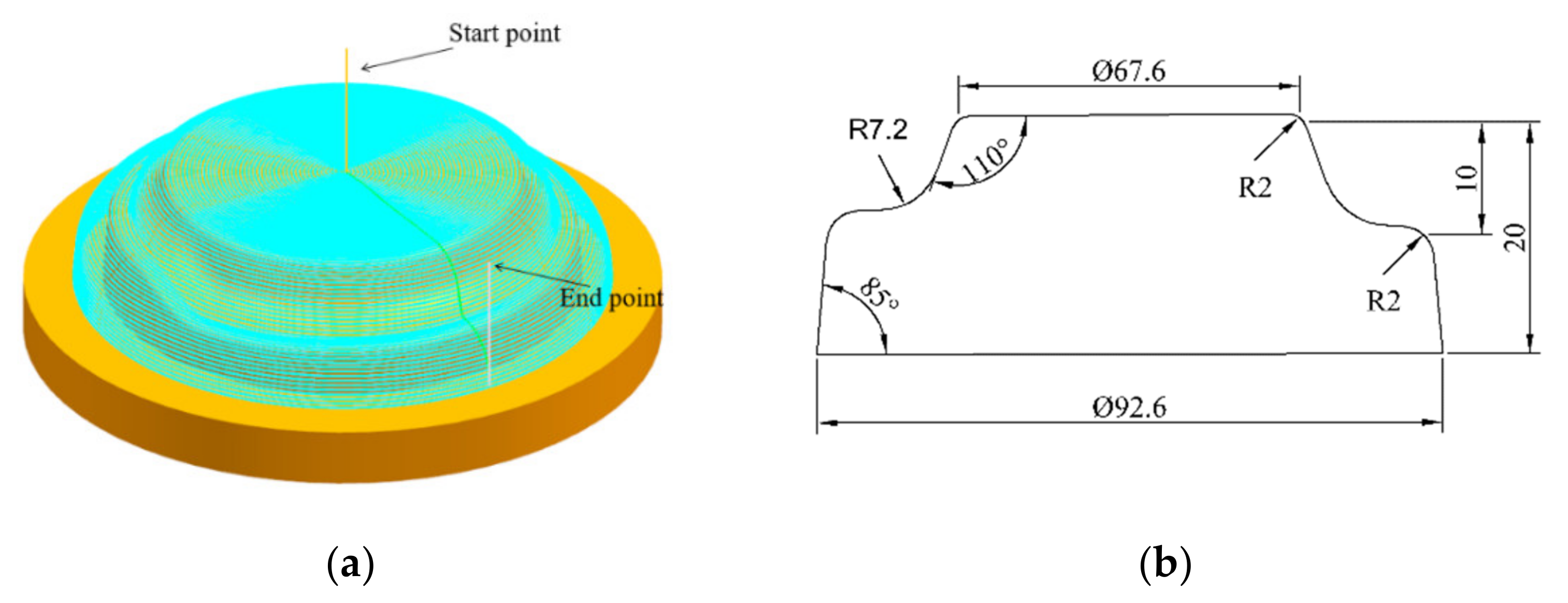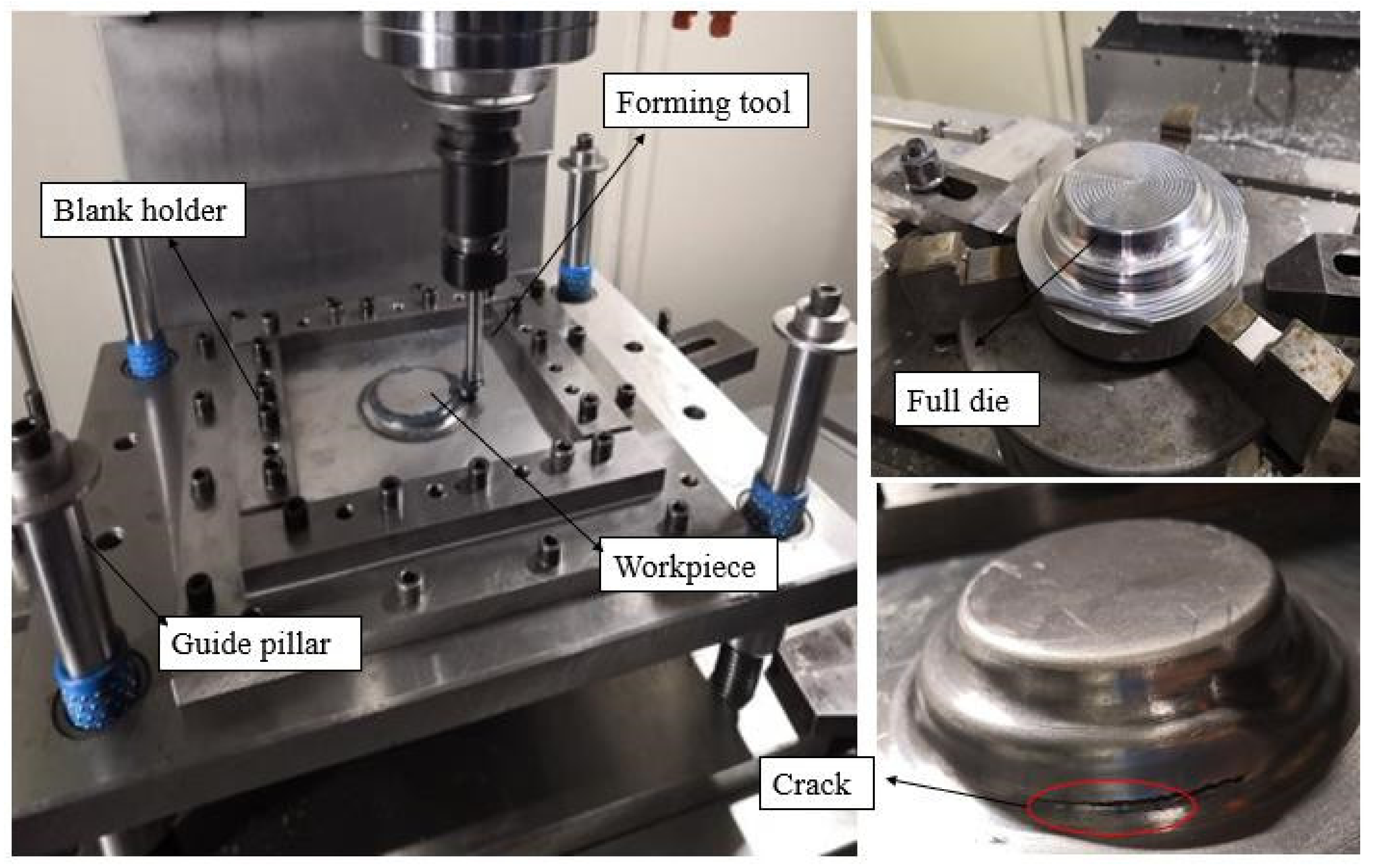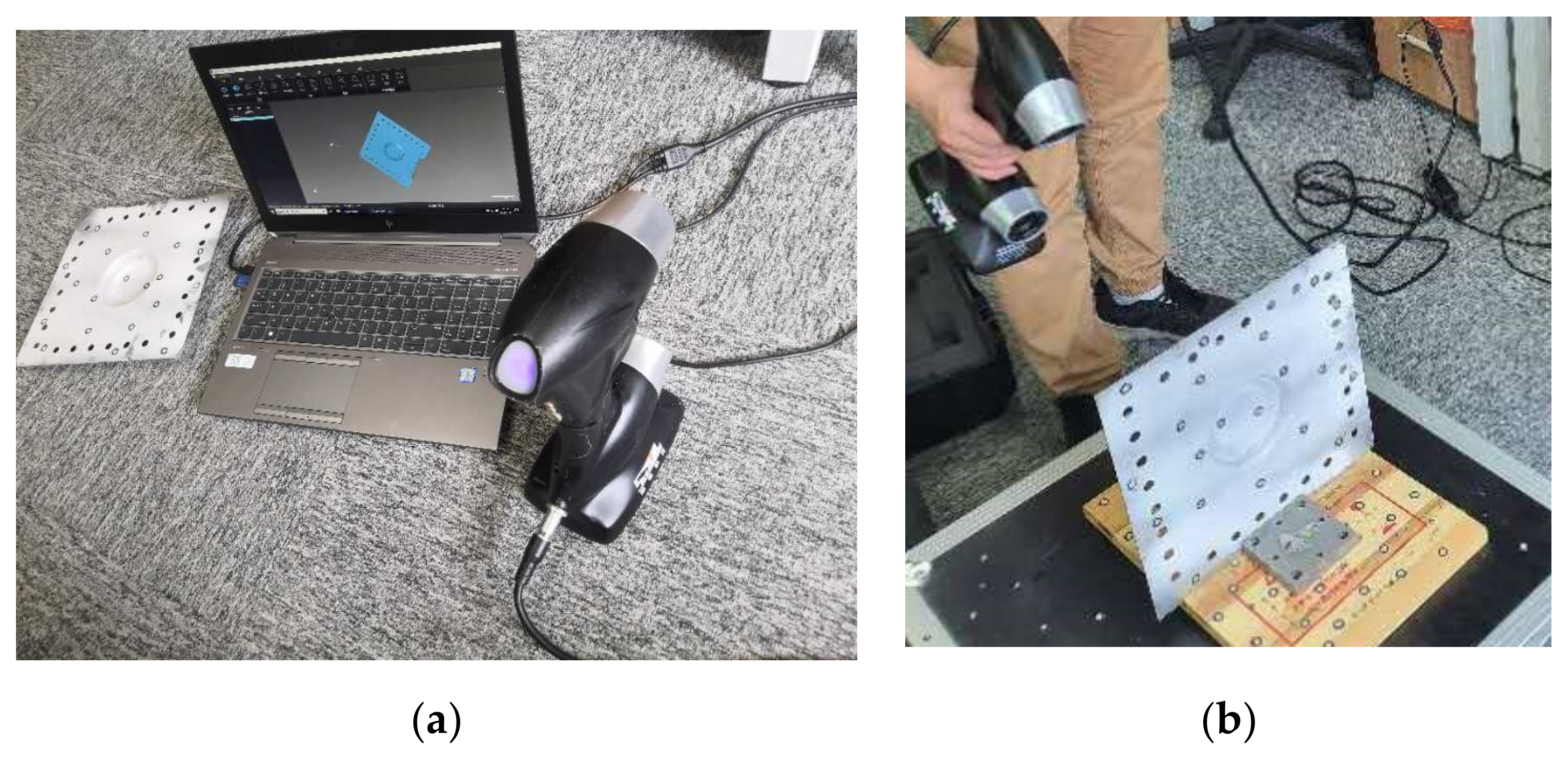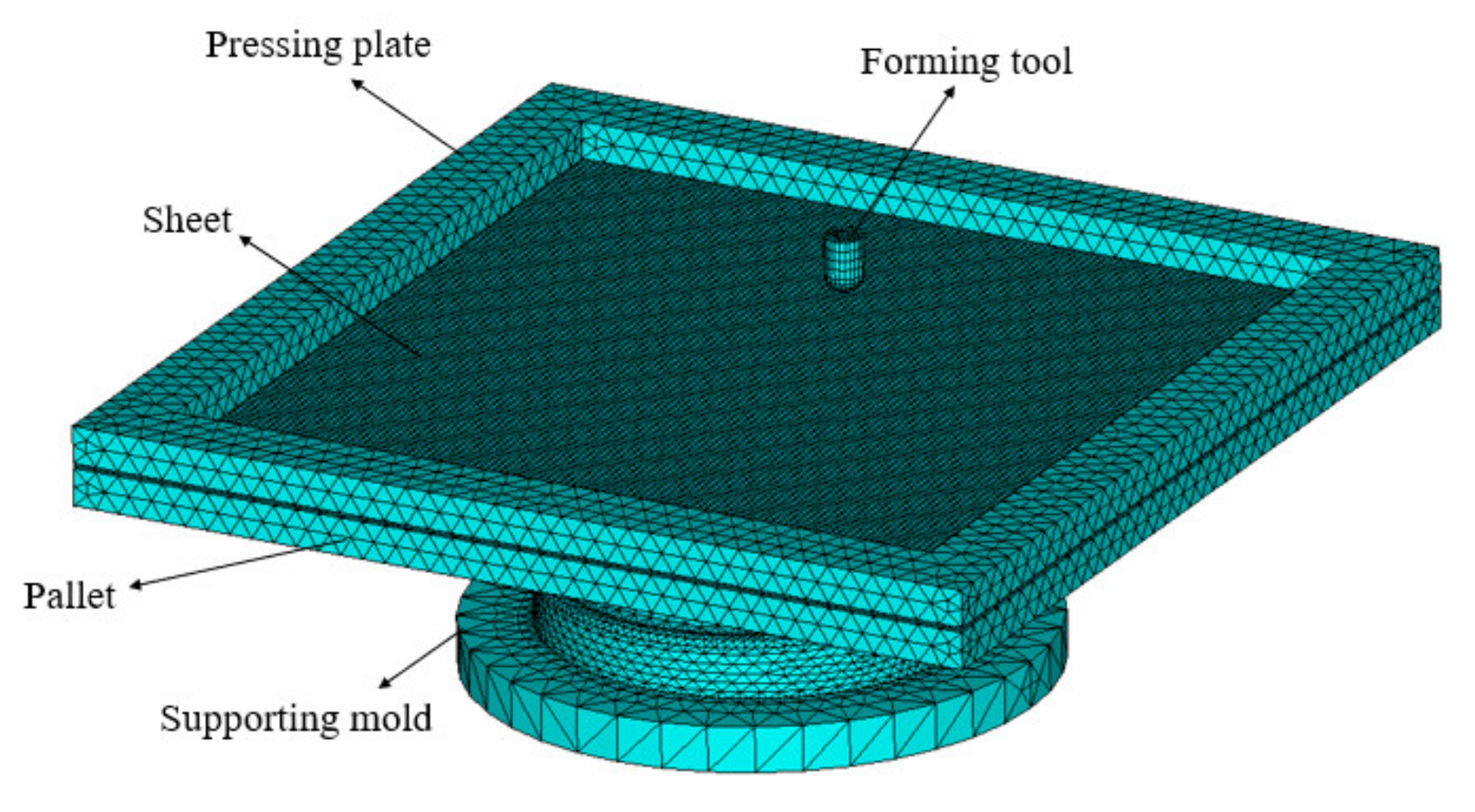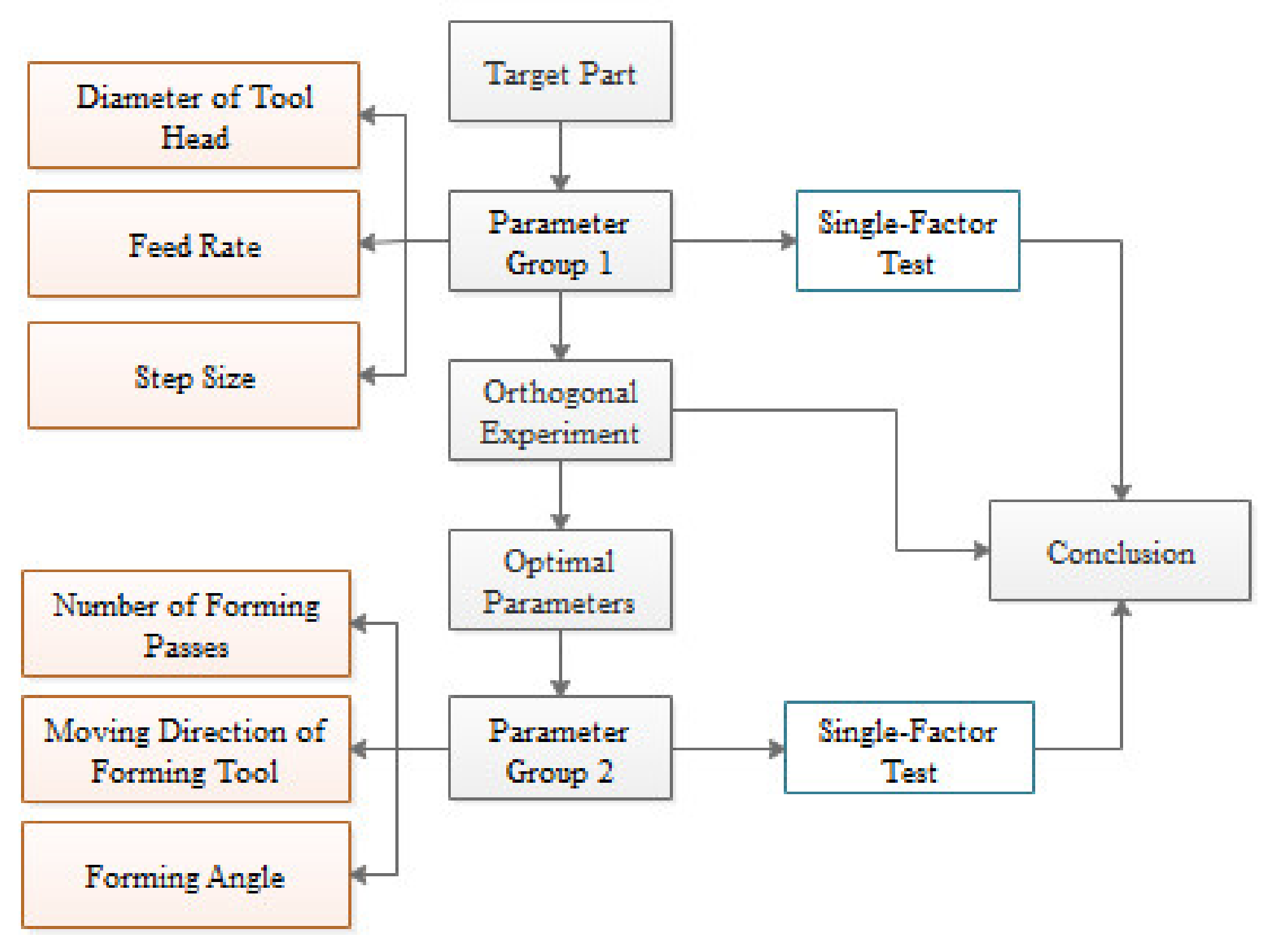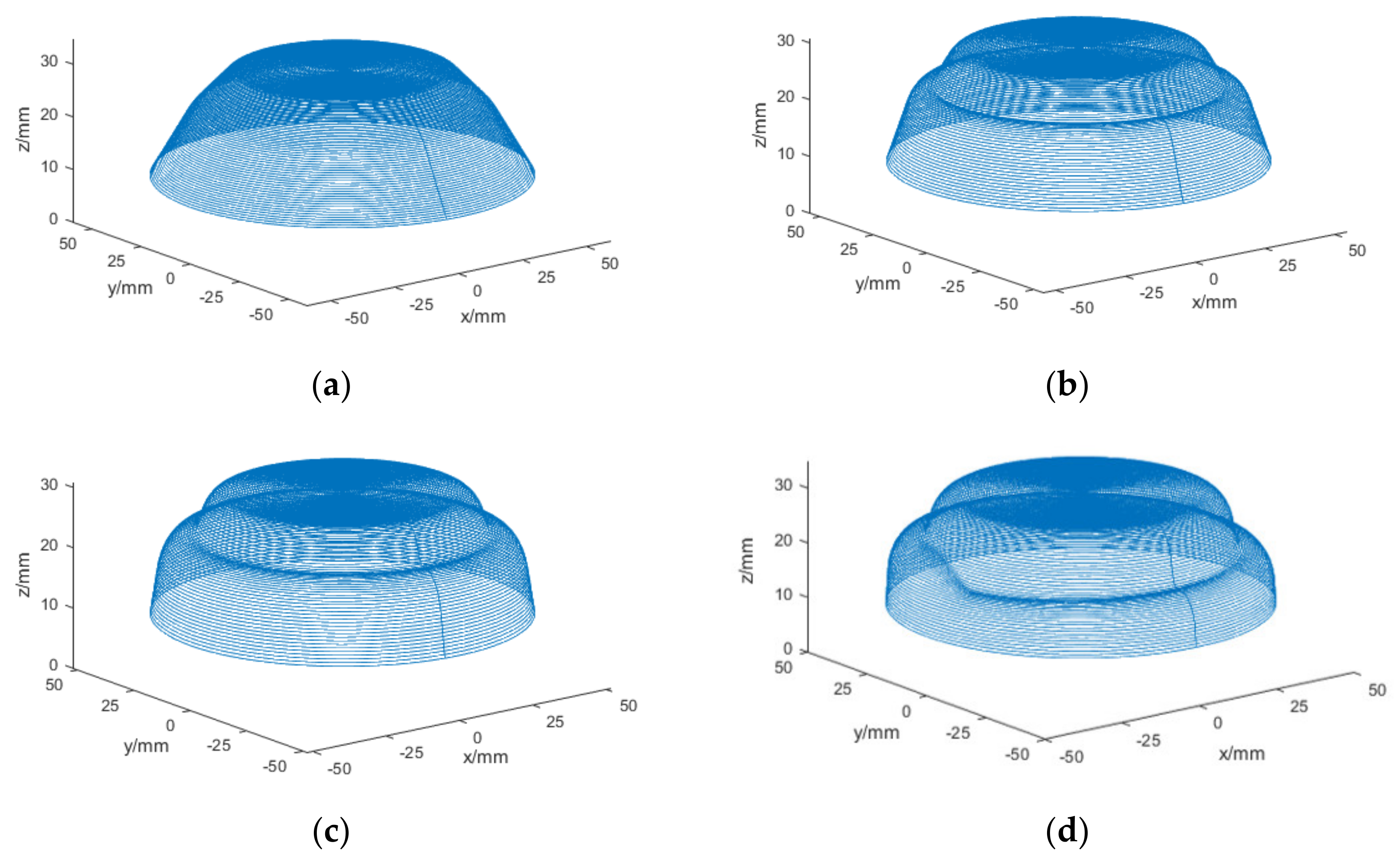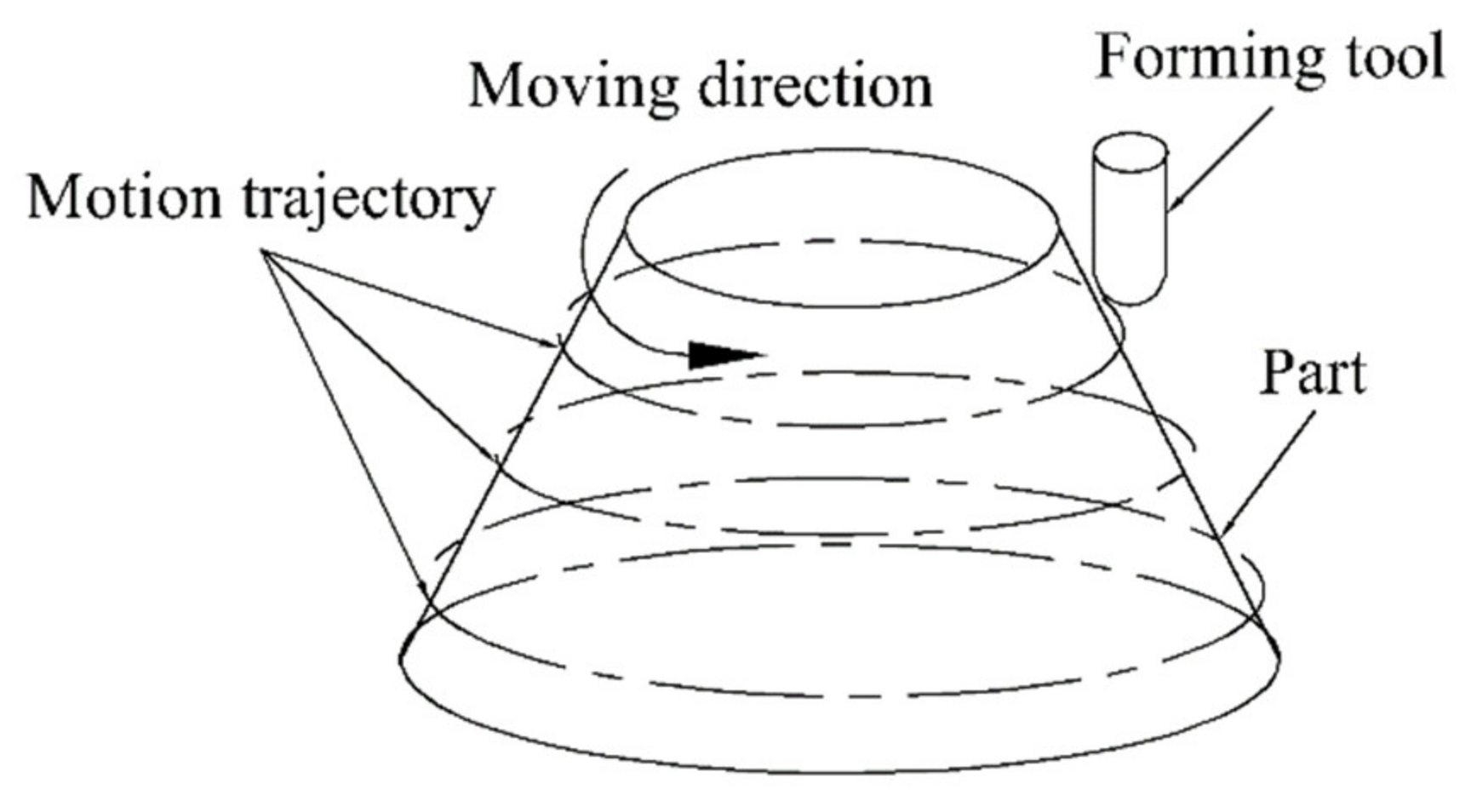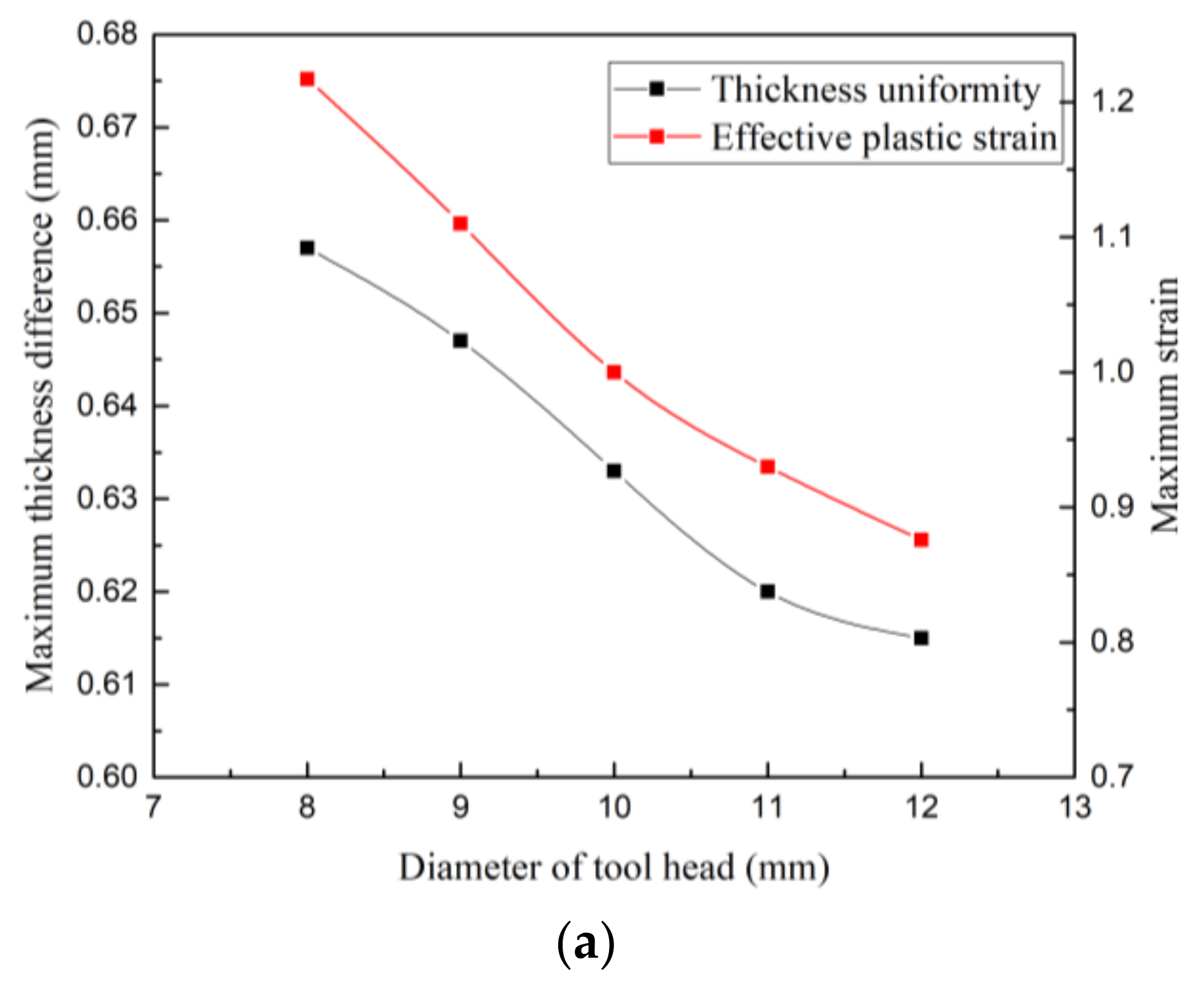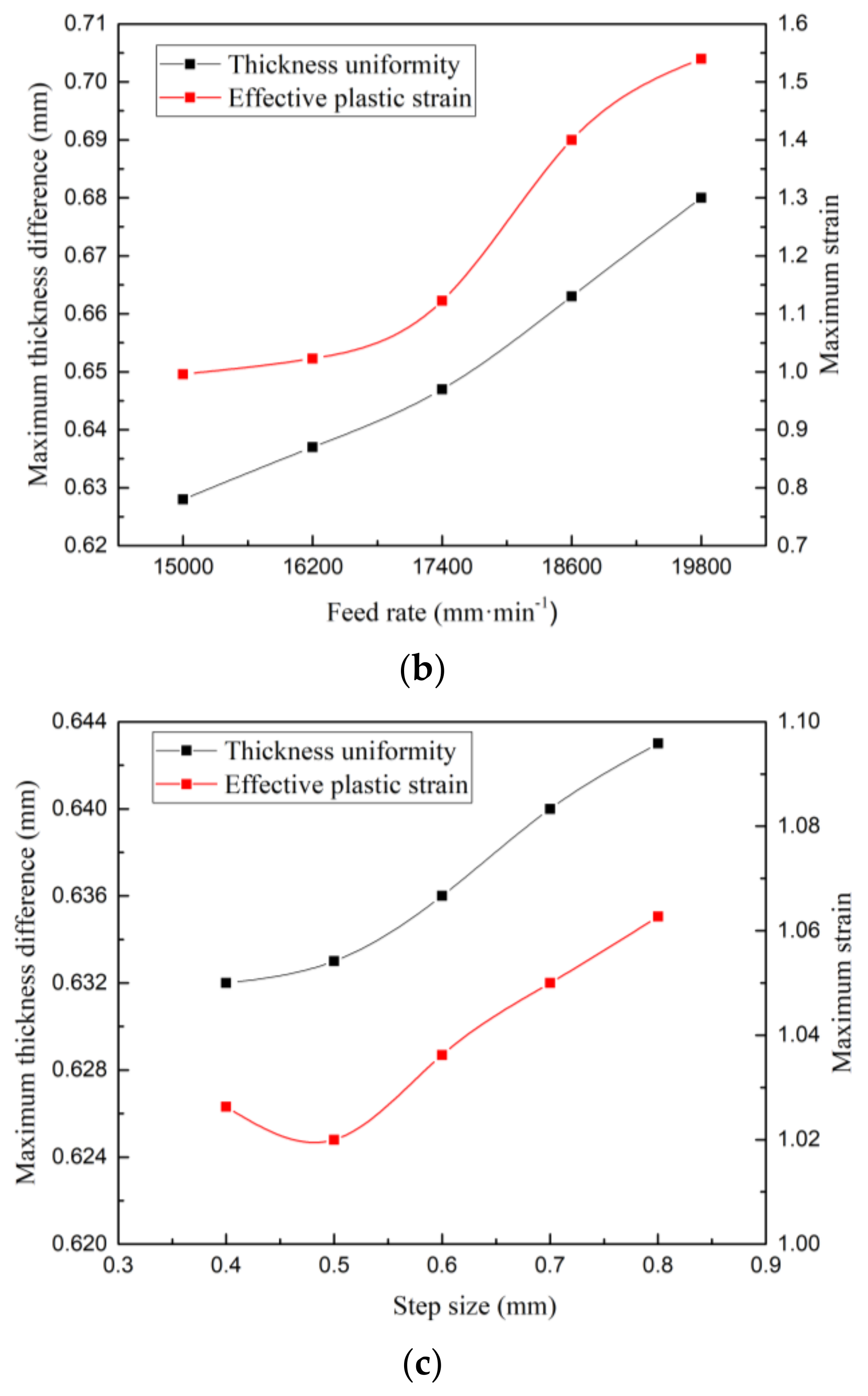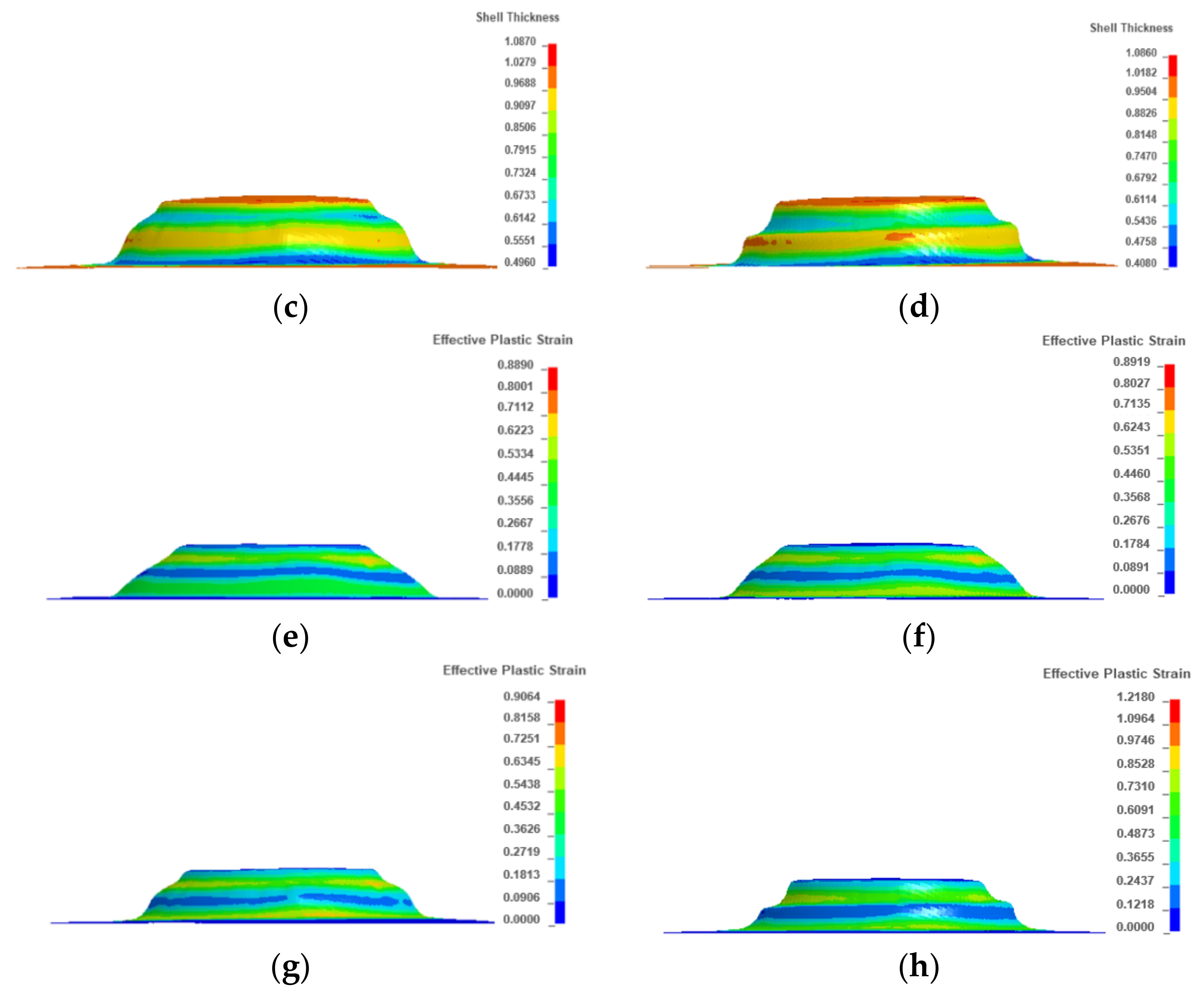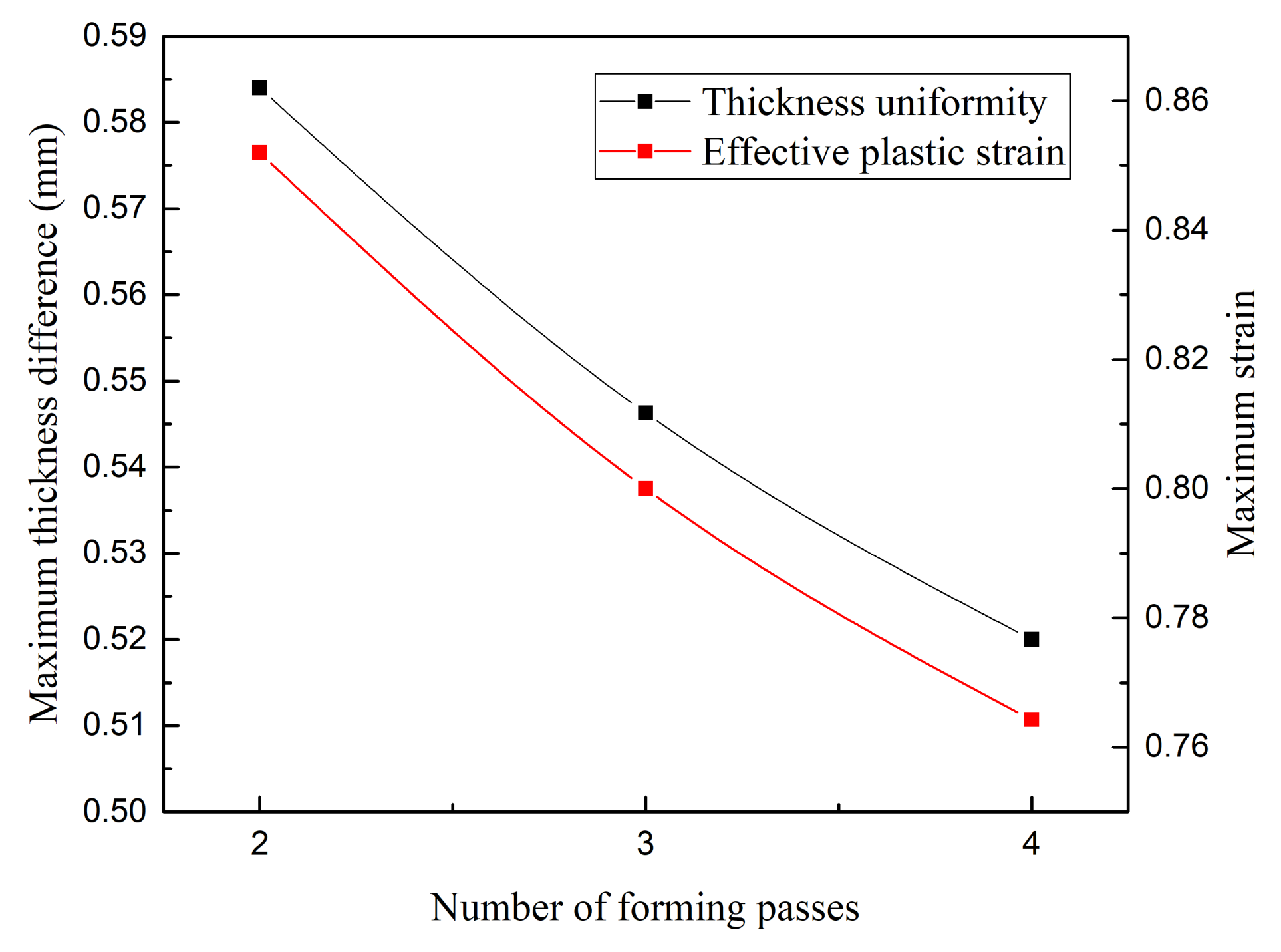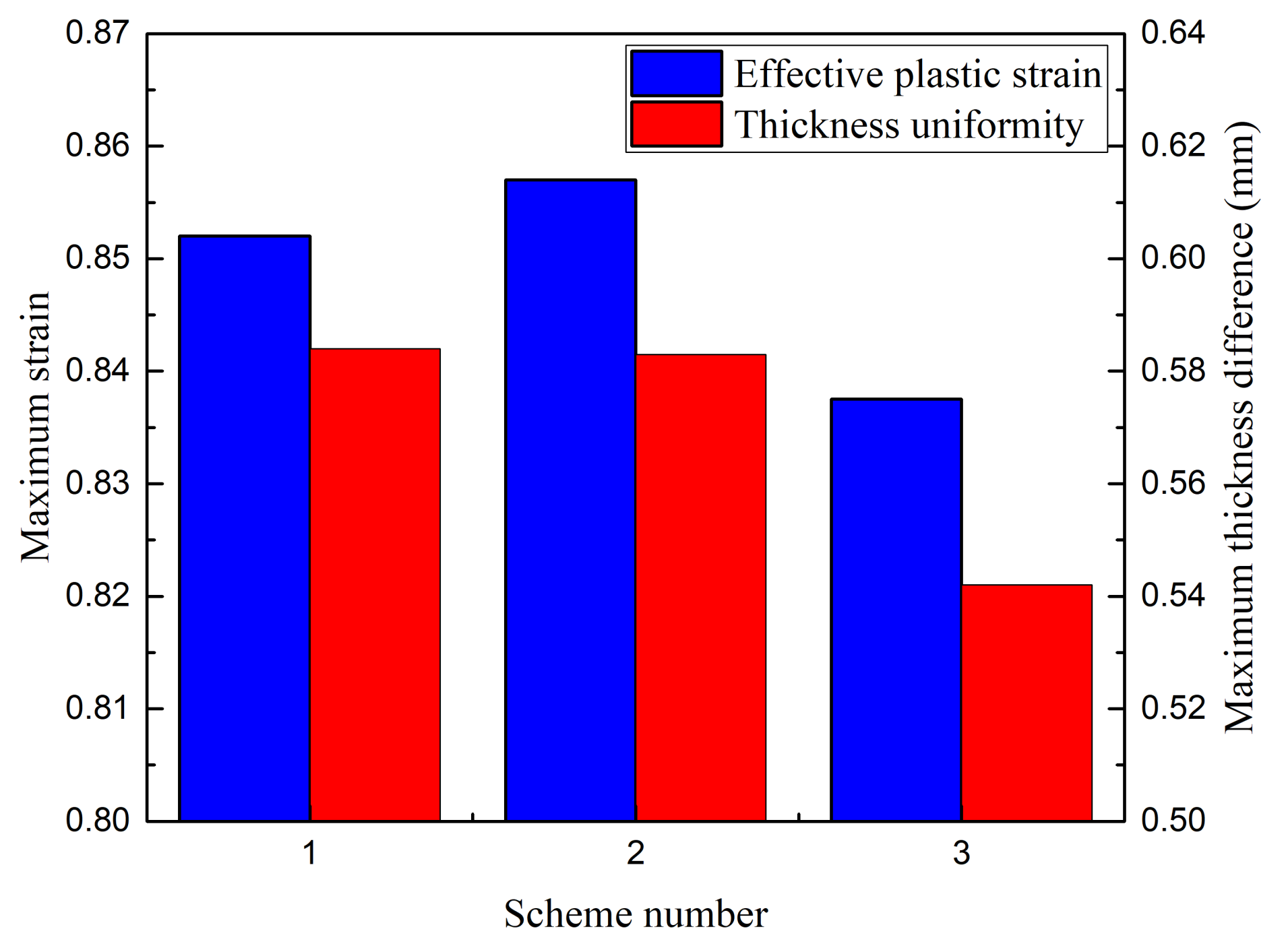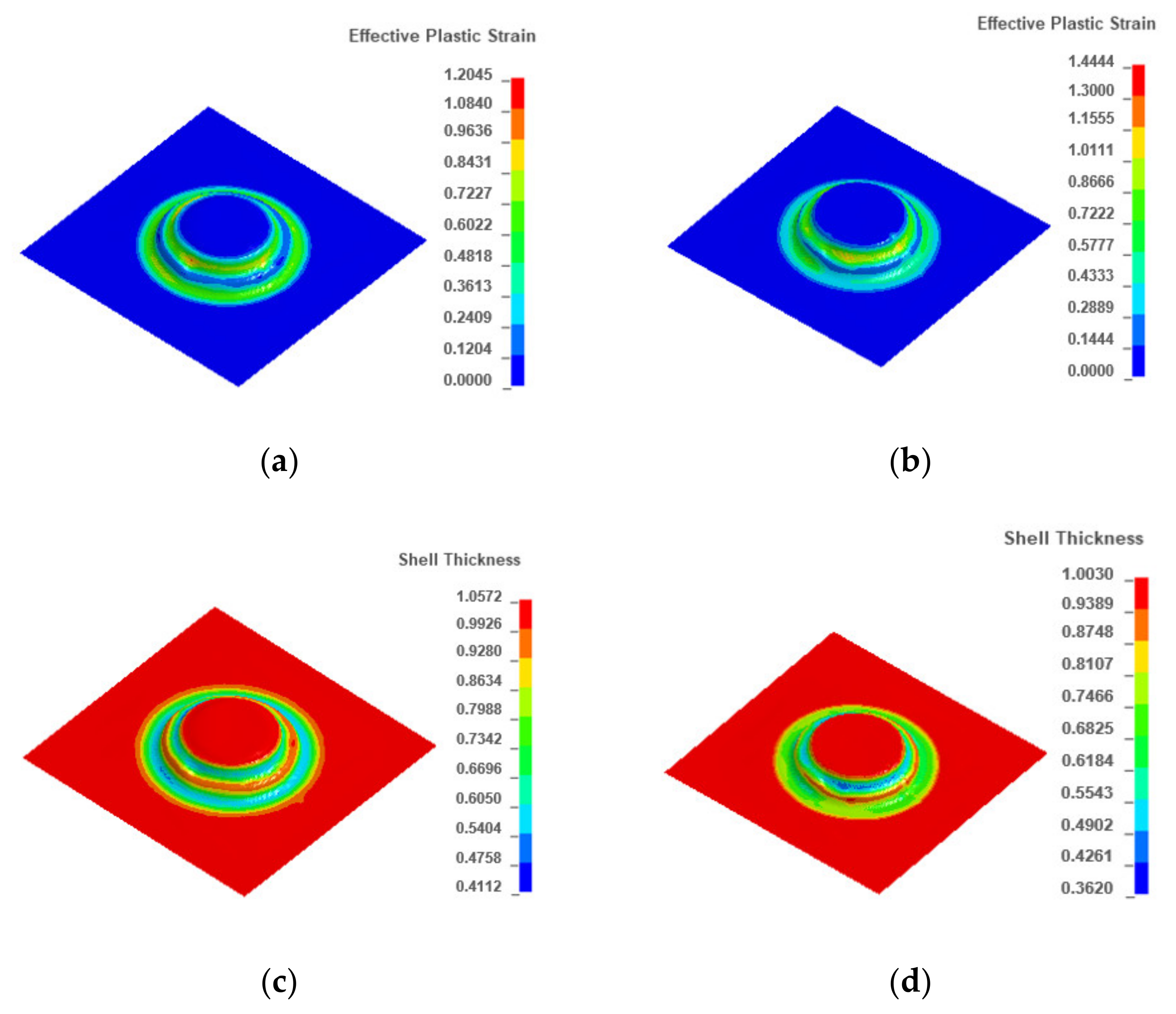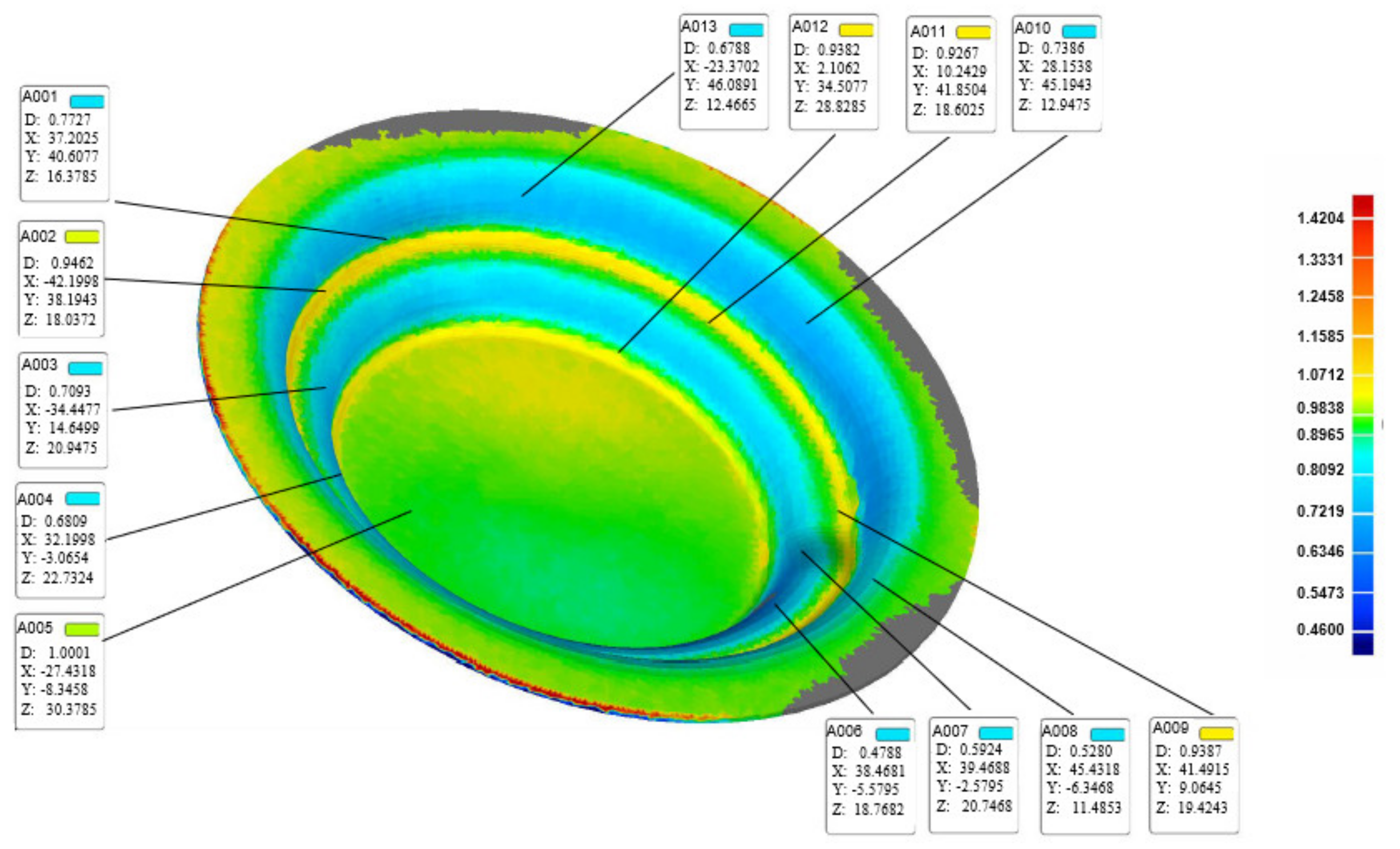1. Introduction
The incremental sheet forming (ISF) process, as one of the research frontiers in the field of rapid sheet metal forming, can form parts with a complex curved surface shape without a special mold or using a simple mold. This process meets the requirements of small-scale and diversified economic markets worldwide, overcomes the problems of long production cycles and high costs, and has a wide range of applications from aerospace to medical research [
1,
2,
3]. Based on the forming method, the ISF technology can be classified into single-point incremental forming (SPIF) or negative incremental forming (NIF) and two-point incremental forming (TPIF) or positive incremental forming (PIF), in which the tool moves around a partial or fully fixed die on a programmed toolpath [
4,
5]; schematics of ISF are shown in
Figure 1.
Sheet metal forming is a nonlinear mechanical process with a large deformation and the flow of materials cannot be accurately controlled due to many factors. Thereby, there will be a variety of defects in the forming process, such as wrinkling, fracture, springback, and so on; therefore, improving formability is essential. Ren et al. [
6] alleviated springback defects in sheet metal forming using a geometric complexity treatment and springback prediction. Meanwhile, Zhu et al. [
7] proposed a method for predicting the springback and generating the compensated forming trajectory. Zhan et al. [
8] investigated the fracture behavior during SPIF and found that the damage gradient increases gradually along the thickness direction. Wang et al. [
9] proposed a process window for higher forming temperatures with a reasonable surface quality for two types of surface defects in FS-ISF, i.e., cutting and fish scale.
During the SPIF process, whether the sheet metal thickness is uniform or not directly affects the final forming quality; hence, thickness uniformity can be considered an indicator of formability to prevent the local thinning from becoming serious. Barnwal et al. [
10] investigated the formability of the cone by analyzing the thickness strain distribution of the components. This study reveals that the process parameters are likely to influence the texture development, especially for large tool head diameters and vertical pitch values. Li et al. [
11] studied the effects of a tool tip with a roller ball and sliding tips on the forming by evaluating the strain behavior and thickness distribution with different tools and revealed that a rolling tool tip produced better surface integrity compared with a sliding tool tip. Hamilton et al. [
12] investigated the effects of feed rates in the range of 5080–8890 mm/min and tool rotating speeds in the range of 400–2000 rpm on the thickness distribution and sectional microstructure in SPIF.
The SPIF process involves several process parameters that may affect the forming behavior, and in turn, the performance and/or quality of the final product. Naranjo et al. [
13] suggested that increasing the temperature could improve the forming performance of materials. Following this, some researchers proposed to increase the temperature of metal sheets through external heat sources [
14,
15,
16], particularly for materials with poor plasticities, such as titanium and magnesium alloys. Kuma et al. [
17] found the combination of higher spindle speed and sheet thickness resulted in the successful forming of components without fracture. Ghulam et al. [
18] found that an increase in the wall angle, feed rate, and rotational speed could improve the microstructure, increase the strength, and reduce the ductility of aluminum alloys. Radu et al. [
19] found that a large tool head diameter had positive effects on the surface roughness and microstructure of parts but negative effects on the accuracy of the formed parts. Hussain et al. [
20] found that the effects of sheet thickness, wall angle, step size, and the interaction between the sheet thickness and wall angle are extremely significant for profile accuracy. Bastos et al. [
21] found the feed rate has no effect on surface roughness for AA1050-H111 after the feed rate reaches up to 1500–12,000 mm/min. Golabi et al. [
22] studied the impacts of the cone diameter and sheet thickness in the SPIF process on SS304 sheets. An increased sheet thickness increased the forming depth of conical frustums.
A good motion trajectory can help to improve the quality of the formed parts. Jeswiet et al. [
23] found that a spiral tool path can produce a uniform strain without scratches. Lu et al. [
24] proposed a bidirectional tool trajectory correction method based on model predictive control. The study results showed that in comparison with the existing forming process, the proposed forming method could effectively reduce the errors in the forming wall and base. Carette et al. [
25] developed an automatic toolpath generation method based on feature geometry. Through using a path offset and compensation, an approach to optimize the surface quality was proposed and verified using simulations and experiments. Hu et al. [
26] proposed a homogenization method for the sheet part thickness based on forming direction optimization. Behera et al. [
27] proposed a solution to improve the accuracy by using multivariate adaptive regression splines (MARS) as an error prediction tool. Blaga et al. [
28] determine the optimal forming strategy by changing the press position and path of the punch. Nirala et al. [
29] compared the residual stress distribution between a fractal-geometry-based incremental toolpath (FGBIT) and conventional incremental toolpaths and found that a higher fatigue life and better strength-to-weight ratio can be formed using an FGBIT.
At present, some contributions have been made using TPIF. Siddiqi et al. [
30] designed a fixture for TPIF, which can realize the function of free vertical movement while resisting horizontal distortion. Fiorentino et al. [
31] studied the effects of the different tool paths on the maximum forming forces in the case of TPIF with a die and found that a low wall inclination in a positive tool path can reduce the force and improve the accuracy. Formisano et al. [
32] compared the SPIF and TPIF processes based on numerical simulations and experimental evaluation; the results showed that the TPIF method can improve the formability and geometric accuracy for formed parts.
Despite the abovementioned research, the knowledge of these techniques still requires deepening, especially for TPIF. To increase available information about the formability of TPIF, an investigation of the effect of process parameters on the thickness uniformity for AA1060 aluminum alloy sheets was carried out through a combination of numerical simulations and physical experiments.
4. Conclusions
In this study, the influences of process parameters on sheet thickness uniformity using the TPIF process for an AA1060 aluminum alloy were investigated; the main conclusions are summarized as follows.
First, we found that the thickness uniformity of the irregular stepped part was related to the diameter of the tool head, feed rate, and step size based on the orthogonal experiment. From the perspective of importance, the diameter of the tool head had the greatest effect, followed by the feed rate, and the step size has the least effect, where the corresponding optimal values were 12 mm, 15,000 mm/min, and 0.4 mm, respectively. The sheet thickness uniformity improved with the increase of tool head diameter but it significantly decreased with the increase of feed rate and step size.
Second, the relationship equations between the maximum thickness difference and effective plastic strain as a function of the diameter of the tool head, feed rate, or step size were obtained for two-pass TPIF for the target part using a polynomial fit method.
Additionally, in a multi-pass TPIF, more passes and a smaller forming angle improved the wall thickness uniformity. The reduction of the forming angle between each pass was beneficial to the flow of the metal and improvement of the formed part accuracy. By alternating the motion direction of the forming tool between adjacent passes, the wall thickness uniformity was significantly improved.
